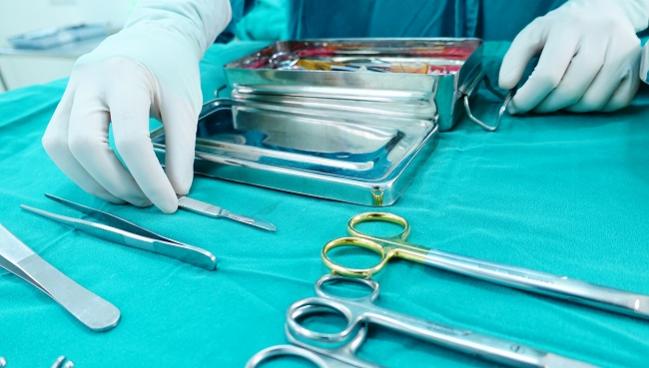Myocardial Injury After Noncardiac Surgery Linked With Higher 1-Year Mortality
Even at a center where patients with high CV risk were routinely screened, perioperative damage had lasting consequences.

Even in an environment where early detection of increased high-sensitivity cardiac troponin T (hs-cTnT) is the norm, perioperative myocardial injury (PMI) after noncardiac surgery still carries consequences. For individuals at high cardiovascular risk, the damage is linked to a 60% relative rise in mortality out to 1 year, according to a new prospective study of more than 2,000 patients.
One in seven of those studied had evidence of PMI, defined as an absolute increase in hs-cTnT of at least 14 ng/L between measurements taken before and after surgery. Yet very few patients with PMI experienced typical chest pain or ischemic symptoms, suggesting that there are underlying differences between surgery-induced damage and spontaneous MI, say Christian Puelacher, MD, PhD (University Hospital of Basel, Switzerland), and colleagues.
So, is it time to start routinely testing hs-cTnT in patients who are slated to undergo noncardiac surgery? “Yes!” senior author Christian Mueller, MD, PhD (University Hospital of Basel), told TCTMD in an email. “Screening is mandatory, as otherwise these events escape detection. Missed detection is a missed chance for treatment.”
The findings, published online this week in Circulation, come on the heels of the nearly 20,000-patient VISION trial, which earlier this year showed that hs-cTnT elevations can predict 30-day mortality following noncardiac surgery. VISION enrolled patients with no requirement that they have preexisting coronary artery disease or peripheral artery disease, however. The current study included individuals thought to have increased cardiovascular risk.
Missed detection is a missed chance for treatment. Christian Mueller
Mueller said it’s not yet clear how best to prevent PMI, but suggested that “avoidance of hypotension and major bleeding are important factors. Whether additional approaches targeting the heart itself might be beneficial is unknown.”
Patients who do develop PMI “need full clinical assessment to identify [its] most likely cause,” which will then inform treatment, he advised.
Cardiologists and others treating patients who’ve recently had noncardiac surgery should be alert, Mueller said. “The immediate postoperative period is a vulnerable period, during which close monitoring of vital signs and detailed clinical assessment are mandatory to either prevent PMI or to rapidly identify the cause of PMI.”
Routine Screening for PMI
For their study, Puelacher et al analyzed data on 2,018 consecutive patients (median age 74 years; 42% women) who underwent 2,546 noncardiac surgeries at their center between 2014 and 2015. The patients were considered to be at high risk so, as part of the hospital’s protocol, they were routinely screened for PMI. Levels of hs-cTnT were measured within 30 days before surgery, at days 1 and 2 after surgery, and later if deemed appropriate.
In all, 16% developed PMI, with 6% of those affected lacking typical chest pain and 18% showing no ischemic symptoms. Mortality was higher at 30 days and 1 year for patients with versus without PMI—differences that remained significant on multivariable regression analysis.
High-Risk Patients After Noncardiac Surgery: Mortality Risk
|
|
PMI |
No PMI |
P Value |
|
At 30 Days |
9.8% |
1.6% |
<.001 |
|
At 1 Year |
22.5% |
9.3% |
<.001 |
Patients with PMI had similarly elevated 30-day mortality whether they did or didn’t fulfill other criteria that indicated spontaneous acute MI, such as ischemic symptoms, new ECG changes, and imaging evidence showing loss of viable myocardium.
Looking to the future, the researchers suggest that further studies should try to tease out specific factors that could identify who is at highest risk of developing PMI. In the majority of affected patients, they say, “cardiomyocyte injury seems to be caused by supply-demand mismatch attributable to hypotension, anemia, and tachycardia rather than plaque rupture.”
Caitlin E. Cox is News Editor of TCTMD and Associate Director, Editorial Content at the Cardiovascular Research Foundation. She produces the…
Read Full BioSources
Puelacher C, Lurati Buse G, Seeberger D, et al. Perioperative myocardial injury after noncardiac surgery: incidence, mortality, and characterization. Circulation. 2017;Epub ahead of print.
Disclosures
- Mueller reports receiving grants from the Swiss Heart Foundation and grants and nonfinancial support from several diagnostic companies during the conduct of the study, as well as grants, personal fees, and nonfinancial support from several diagnostic companies outside the submitted work.
- Puelacher reports receiving grants from PhD Educational Platform for Health Sciences and the University Hospital of Basel during the conduct of the study.


Comments